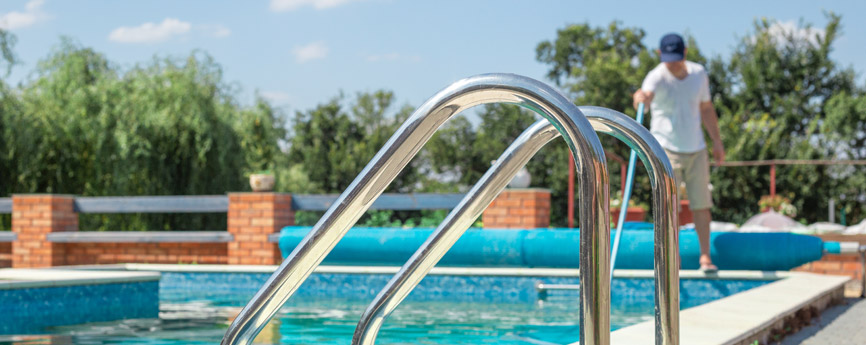Why swimming pool disinfection goes beyond chlorine
[

]
Swimming pools as we know them use chlorine to fight germs and keep the water disinfected. When chlorine is added to a swimming pool, it forms a weak acid called hypochlorous acid that kills bacteria such as salmonella and E. coli, as well as germs that cause viruses like diarrhoea and swimmer’s ear.
This substance prevents the spread of bacteria and fungi, however, prolonged exposure, or poor management of quantities, can cause health problems. Why? It all starts because water contains a higher pH than the epidermis. When we swim or wash our hands, our skin tends to dry out. Even if present in the right amounts, chlorine can be altered by common products, such as sunscreens, deodorants and perfumes, and can damage the protective fatty layer of the skin and dry it even more.
To avoid this problem, we need to reduce or eliminate the amount of chlorine that swimming pools contain, promote disinfection through other materials or energy sources, such as solar energy, and, in short, achieve bio-healthy, ecological swimming pools. Would you like to see how? Find out here!
What are bio-healthy swimming pools?
Our bio-healthy swimming pools are a completely ecological, sustainable and innovative system that:
- Consumes less energy that, since only pumping is necessary, can be solar and daytime, thereby eliminating the use of batteries.
- Wastes less water as it requires less backwashing of the filtration medium. Fundamental for being environmentally-friendly and reducing our water footprint.
- Requires less maintenance, saving the costs of basin cleaning, backwashing of the filter, replacement of the filtration medium, addition of salts etc.
- Does not require additional chemicals, thereby reducing costs in terms of money, danger, time and concerns generated by the storage of these toxic substances.
- Does not modify the salinity of the water.
- Uses nanotechnology certified by SGS that uses solar energy to purify surfaces such as ledges, banisters, covers and other parts so that they are permanently disinfected.
What does our [i]pool system involve?
- One filtration medium.
- One photocatalysis reactor.
- Photocatalytic nanolayer.
- Water-soluble copper and zinc additives.
- Responsible use of chemicals. We progressively reduce the different chemicals used (never all at once) until we reduce them or completely eliminate some, although always according to the water and the use made of the swimming pool.
- pH regulator: there are two products, one that raises and one that lowers the pH, while the active filtration medium based on zeolites self-regulates it.
- Algaecide and fungicide: a water-soluble additive that can be added to the filtration medium, completely removing the algaecide/fungicide. If this additive cannot be used due to local regulations, it is greatly reduced, almost entirely, thanks to the solar photocatalysis nanolayer when the swimming pool is in the sun.
- Flocculant: kept at the beginning to leave the swimming pool completely transparent and it is then reduced by 25% a week.
- Disinfectant: usually chlorine or bromine, which must comply with the amount dictated by local regulations. For example, in Castellón, we have managed to ensure that public swimming pools only use 15% of the chlorine they used before or they use bromine, which is more suitable than chlorine as it does not generate by-products such as chloramines.
Talk to our team.
If you want to know more about our [i]solutions, contact us.

